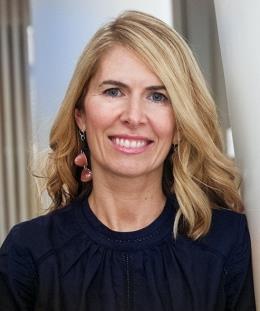The importance of human endeavour - Full Court decides that an AI system cannot be named
14 April 2022

14 April 2022

Dr Stephen Thaler applied for a patent which named DABUS (the device for autonomous bootstrapping of unified sentience), an AI system, as the inventor. Dr Thaler's application claimed a patent over DABUS' output, which included storage containers and devices and methods for attracting enhanced attention.
Following a formalities check of Dr Thaler's application, the Deputy Commissioner for Patents issued a direction to Dr Thaler requesting the name of the inventor. The Deputy Commissioner stated that identifying an AI system as an inventor was inconsistent with the requirements of the Patents Act 1990 (Cth) (Act) and Patents Regulations 1991 (Cth) (Regulations).
Dr Thaler appealed to the Federal Court. In a surprising decision, Justice Beach set the Deputy Commissioner's determination aside and concluded that the Deputy Commissioner had erred in deciding that, under the Act, an inventor must be human.
Amongst other reasoning, his Honour determined that the term "inventor" is an agent noun which could describe a person or a thing. In view of this, his Honour considered that the concept of an inventor should be flexible and evolve over time. This flexibility would achieve the purpose of the patent system which is to encourage technological innovation irrespective of whether the innovation is the product of human endeavour.
The Commissioner of Patents appealed this decision. The appeal was heard by an expanded Full Court bench (that is, five judges instead of three), consisting of Chief Justice Allsop, Justices Nicholas, Yates, Moshinsky and Burley.
The Full Court unanimously overturned Justice Beach's decision and concluded that DABUS, as a non-human, could not be considered an inventor for the purposes of the Act and Regulations.
In interpreting the relevant provisions of the Act, the Court considered the history of the legislation.
Their Honours' started with the Statute of Monopolies and emphasised the close link between rewarding ingenuity and acts of invention by the "true and first inventor". They then considered a range of cases decided under the Patents Act 1903 (Cth) and the requirement that a patent application demonstrate the inventor's role in conceiving the invention. Similarly, the Patents Act 1952 (Cth) predicated a person's ability to apply for a patent upon the existence of an "actual inventor", that is, a person with legal personality.
As no recommendations to change the role of the inventor were made during the conception of the present Act, their Honours concluded that both historical and current provisions of the Act proceeded on the basis that an inventor must be a natural person. Therefore, since the origins of entitlement to a patent lie in human endeavour, DABUS could not be considered an "inventor" under the Act and Regulations.
Regulation 3.2C(2)(aa) requires that an applicant of a Patent Cooperation Treaty (Washington, 19 June 1970) (PCT) application must provide the name of the inventor of the invention to which a patent application relates.
The Full Court accepted the Commissioner's argument that reference in reg 3.2C(2)(aa) to "inventor" and "invention" have the same meaning as under the Act and that DABUS could not be an "inventor". Consequently, it was held that Dr Thaler's application had validly lapsed under reg 3.2C(5) for failure to satisfy this mandatory requirement.
Section 15 of the Act identifies four classes of persons that may be granted a patent for an invention. A key issue was whether paragraphs (b), (c) and (d) in s 15(1) are alternative and separate sources of entitlement to the inventor listed in s 15(1)(a), or whether a legal relationship is first required between the actual inventor and the person entitled to the grant.
The Full Court concluded that the latter construction is correct, meaning that ss 15(1) (b), (c) and (d) each provide for circumstances in which a person becomes entitled to the grant of a patent after first receiving that entitlement from a human inventor in s 15(1)(a). Their Honours considered that this interpretation is consistent with both the natural reading of the statute and the legislative history of the development of patent law discussed above.
Accordingly, a person may only claim entitlement through an assignment under s 15(1)(b) from the inventor of s 15(1)(a) who must be a natural person. This equally applies to s 15(1)(c), which allows a person to derive title to an invention either "from the inventor" or from "a person mentioned in (b)". As such, because DABUS was not an inventor, Dr Thaler was not entitled to the grant of a patent under s 15(1)(b) and (c) regardless of whether he had any rights to the output of DABUS.
It is important to note that it was an agreed fact before the Court that DABUS was the inventor for the invention the subject of the application. The Court was not asked to decide whether Dr Thaler might have been appropriately named as the inventor. This question will remain to be explored in future cases.
The Full Court's decision emphasised that policy considerations should not cloud the task of statutory construction. Nevertheless, their Honours acknowledged the need for greater clarification regarding the interaction between AI and patent law, describing such debate as "important and worthwhile". The judgment identified numerous propositions that should be considered within this context as follows:
"…whether as a matter of policy, a person who is an inventor should be redefined to include an artificial intelligence. If so, to whom should a patent be granted in respect of its output? …If an artificial intelligence is capable of being recognised as an inventor, should the standard of inventive step be recalibrated such that it is no longer judged by reference to the knowledge and thought processes of the hypothetical uninventive skilled worker in the field? If so, how? What continuing role might the ground of revocation for false suggestion or misrepresentation have, in circumstances where the inventor is a machine?"
These considerations are just some of the important questions which will arise if legislative changes are introduced permitting AI systems to be named as inventors in the absence of human involvement.
Despite the absence of an express definition of "inventor" in the Patents Act 1990 (Cth), this decision demonstrates how the historical objectives of patent law remain relevant even in the context of emerging technologies such as AI.
However, as the Full Court highlights, the interaction between AI and the patent system is an issue that requires further consideration. The Full Court's decision clearly identifies a number of matters which must be considered by the legislature. We will keep you updated as these issues progress!
Authors: Nina Fitzgerald, Partner; Vivien Lin, Graduate; and Lauren Howe, Graduate.
The information provided is not intended to be a comprehensive review of all developments in the law and practice, or to cover all aspects of those referred to.
Readers should take legal advice before applying it to specific issues or transactions.





Sign-up to select your areas of interest
Sign-up